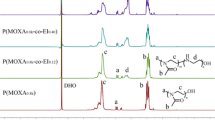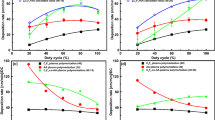Abstract
Sterilization is frequently an issue for polymeric biomaterials including hydrogels, where autoclaving needs to be discarded, and γ-irradiation and low temperature hydrogen peroxide gas plasma sterilization are already important alternatives. Coatings based on poly(ethylene glycol) are a well-known strategy to reduce unspecific protein interactions on biomaterial surfaces. Dense, ultrathin coatings of isocyanate terminated star-shaped poly(ethylene glycol) (starPEG) molecules have proven to be resistant to unspecific adsorption of proteins and enable direct biofunctionalization. The effectivity and stability of the starPEG coatings on poly(vinylidene fluoride) (PVDF) were studied after γ-irradiation (normed dosis 25 kGy) and plasma sterilization (Sterrad 100S). The selected surface properties determined were: surface composition (X-ray photoelectron spectroscopy, XPS), wettability (sessile drop contact angle) and protein adsorption by fluorescence microscopy (Avidin-TexasRed, Bovine Serum Albumin-Rhodamin). Preliminary cell experiments with the cell line L929 were performed prior and after sterilization to investigate the cell repellence of the starPEG coatings as well as cell viability and specific cell adhesion on GRGDS-modified coatings. The starPEG coating undergoes a slight oxidation due to plasma and γ-sterilization; this represents a minor variation confirmed by XPS and contact angle results. The non-sterilized starPEG and the plasma-sterilized coatings are protein repellent, however the protein adsorption on starPEG coated substrates is much stronger after γ-sterilization for both avidin and bovine serum albumin. The cell experiments indicate that the starPEG coatings are appliable homogeneously by incubation and are non-cell adherent. Moreover, after both sterilization processes the starPEG coatings remain cell repellent and the GRGDS-modified coatings presented vital cells. Thus we conclude that the plasma sterilization is more convenient for the starPEG coatings and GRGDS-modified starPEG coatings.




Similar content being viewed by others
References
P. Cacciafesta et al., Langmuir 16, 8167 (2000)
L. Tang et al., PNAS 95, 8841 (1998)
R. Johnson et al., Biomed. Sci. Instrum. 34, 47 (1997)
G.W. Bos et al., J Biomed. Mater. Res. 44, 330 (1999)
A. Kidane et al., J. Biomed. Mater. Res. 44, 640 (1999)
P. Kingshott et al., Anal. Biochem. 273, 156 (1999)
W. Norde, Macromol. Symp. 103, 5 (1996)
J. Buijs, V. Hlady, J. Colloid. Interface Sci. 190, 171 (1997)
J.N. Turner, W. Shain, Exp. Neurol. 156, 33 (1999)
J.M. Harris, (ed.), Poly (ethylene glycol) Chemistry: Biotechnical and Biomedical Applications (Plenum Press, New York, 1992)
S.I. Jeon et al., J. Colloid. Interface Sci. 142, 149 (1991)
J. Groll et al., Biomacromolecules. 6, 956 (2005)
J. Groll et al., J. Biomed. Mat. Res. Part A 74A(6), 607 (2005)
M.D. Pierschbacher, Ruoslahti E., Nature 309, 30 (1984)
M.D. Pierschbacher, Ruoslahti E., Nature 309, 30 (1984)
T.C. The et al., Biomaterials 17(13), 1273 (1996)
A.A. Bialasiewicz et al., Ophtal. Res. 27(1), 124 (1995)
K. Kelly-Wintenberg et al., J. Vac. Sci. Technol. A 17(4), 1539 (1999)
C.E. Holy et al., Biomaterials 22(1), 25 (2001)
E.A. Amir et al., J. Chem. Phys. Chem. 5, 552 (2004)
Acknowledgments
This work was supported by BMBF project Nr. 0330469. Júlia Lleixà Calvet would like to thank Alexandra Goldyn for her instruction in cell experiments. SusTech Darmstadt is acknowledged for support with the StarPEG system.
Author information
Authors and Affiliations
Corresponding author
Rights and permissions
About this article
Cite this article
Lleixà Calvet, J., Grafahrend, D., Klee, D. et al. Sterilization effects on starPEG coated polymer surfaces: characterization and cell viability. J Mater Sci: Mater Med 19, 1631–1636 (2008). https://doi.org/10.1007/s10856-008-3381-x
Received:
Accepted:
Published:
Issue Date:
DOI: https://doi.org/10.1007/s10856-008-3381-x




